852 episodes


If you're out on a run, and you have heel pain that suddenly hurts a lot, you may have a calcaneal stress fracture, especially if you see bruising and swelling. If you go see a doctor, they take an x-ray, and they don't see anything at all but they squeeze your heel and it hurts. The suspicion goes up. If your doctor gets an MRI that shows a calcaneal stress fracture, the doctor is probably going to tell you, "you can't do anything until the stress fracture heels." Today on the Doc On The Run Podcast, we're talking about calcaneal stress fractures in runners and I have some good news and some bad news.


Last night, I was doing a consultation with an athlete who actually broke one of her toes and her main question was: Can I compete in four weeks? I have a competition in four weeks, I want to compete. Do you think I'll be ready? Well, I actually told her, no joke, I actually said, “I'm very sorry, but my crystal ball is broken.” However, I can tell you how to figure that out because that is what I teach athletes to figure out when they do the Fast Track challenge. I have a broken toe and I want to compete in four weeks. Is it possible? Well, that's what we're talking about today on the Doc On The Run Podcast.


Yesterday, I went to an appointment with a friend who had an appointment with an orthopedist. She had 3 fractures. She wanted to know what she could do in terms of activity while she's healing and recovering from these different injuries. I just went with her, not as her physician, but to serve as a friend and advocate for her at her appointment. This episode is going to explain why you really need to take an advocate with you to any doctor's appointment. I went to an orthopedic appointment yesterday and they told me to come back in four weeks. What do I do now? Well, that's what we're talking about today on the Doc On The Run Podcast.
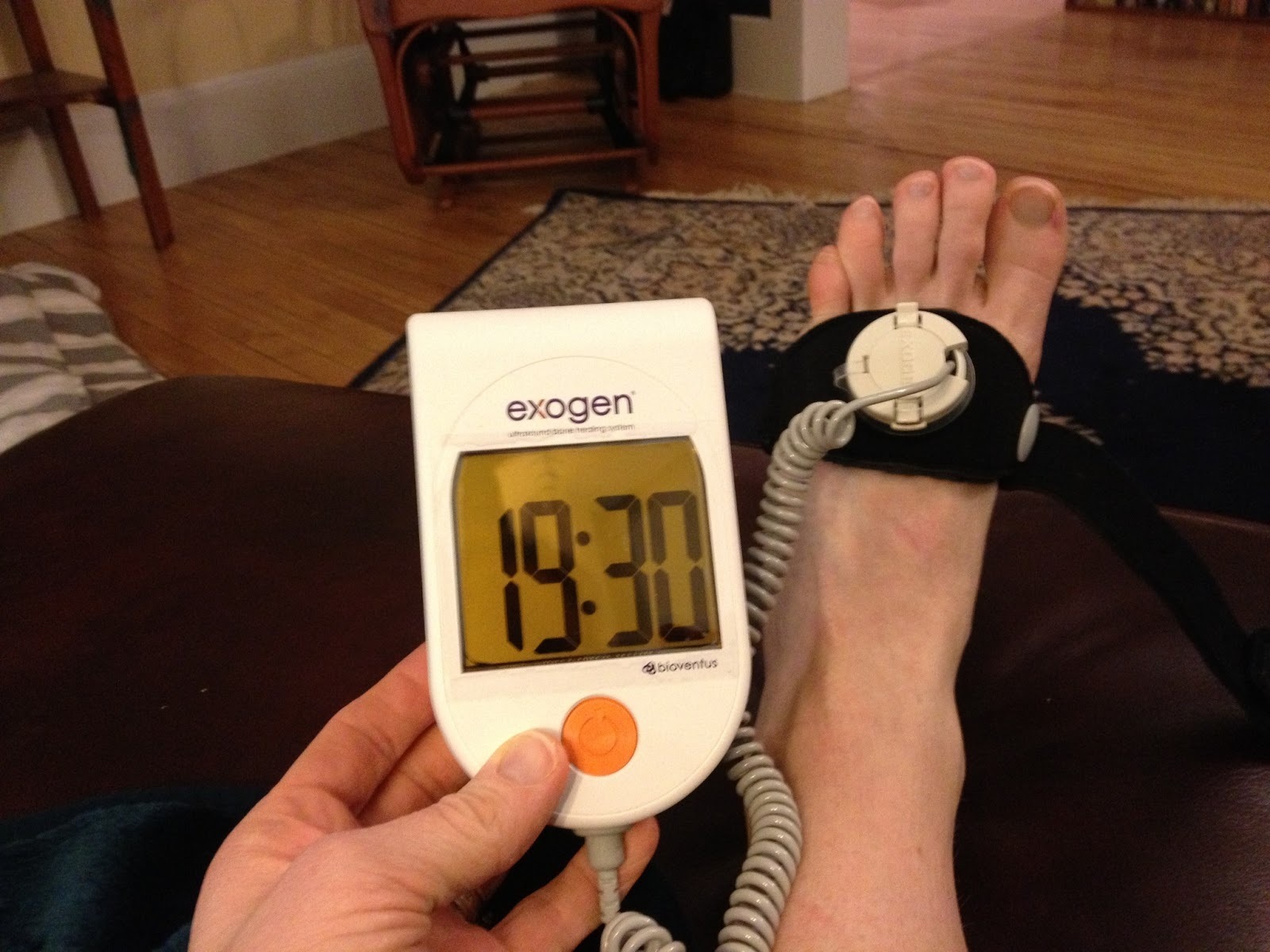

Yesterday, I was doing a consultation with an athlete who broke one of her toes when she accidentally kicked a piece of furniture. If you fracture your toe, and you just run and ignore it, it can turn into a painful nonunion (non-healed fracture). As a runner, you want to speed the healing as much as possible. One of the ways to stimulate fracture healing is with a thing called a bone stimulator. This particular athlete actually happened to already have a bone stimulator. Her question was pretty obvious: “Can I just use that bone stimulator for this broken toe since it's a different kind of fracture?” Well, that's what we're talking about today on the doc on the run podcast.
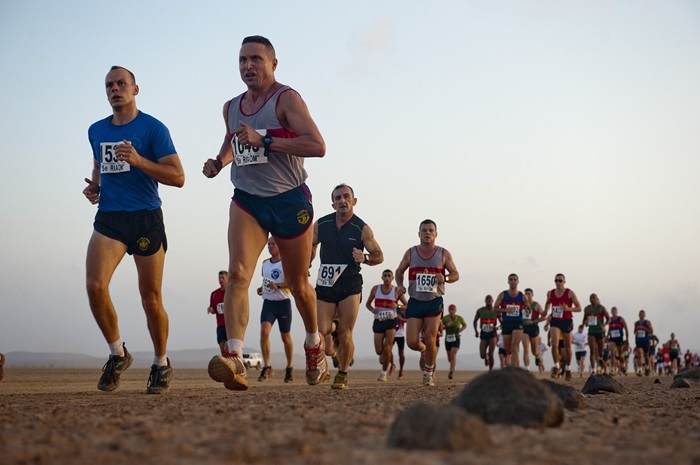

If you're a runner with heel pain you may think you have plantar fasciitis. But if it is not getting better, your heel pain may be caused by "neuritis." I was just giving a lecture to a group of physicians getting their continuing medical education credits at the International foot Medical Foundation medical conference in Lake Tahoe. I was giving a lecture called “When Heel Pain is NOT Plantar Fasciitis in Runners.” One of the conditions I was talking about was "medial calcaneal neuritis." One of the doctors in the audience asked a really great question... He said, “I see a lot of people that have Baxter’s neuritis, and it's down on the bottom of the heel it's plantar , it’s not on the side of the heel, it’s not medial neuritis, it's different. What would you do to tell the difference between these two conditions in a runner, given the circumstances you just explained in the talk?” Today on the Doc On The Run Podcast we're talking about medial calcaneal neuritis versus Baxter’s neuritis in a runner.


I recently did a consultation with a runner who had gotten a plantar plate injury. He had been getting better by using some of the tricks I teach in the Plantar Plate Course For Runners. He got better, he was protecting it, he reduced the stress and strain on the ligament, and he got back to running. He was doing great. But then he had a setback when he went to the synagogue. He was dressed up and wearing some fancy dress shoes, and he started to get plantar plate pain again. Today on the Doc On The Run Podcast, we're talking about how dress shoes with a long toe box can actually work as a lever against your plantar plate.


I was just at the International Foot & Ankle foundation meeting in Lake Tahoe listening to a lecture given by a Professor of Biomechanics and Podiatric Medicine at Barry University. He said that a cortisone injection can be used as a "stop gap treatment" in heel pain caused by plantar fasciitis. The idea is that some runners may need pain relief sooner than would normally be expected. It is true that corticosteroid injections can reduce the inflammation in and around the plantar fascia and quickly reduce pain. When I had "normal practice" with "normal patients," I used to treat plantar fasciitis with corticosteroid injections pretty much daily. But I almost never do plantar fascia cortisone injections now. Can a corticosteroid injection serve as a stop gap for runners with heel pain? That's what we're talking about today on the Doc On The Run Podcast.


I just had a conversation with a runner who has a plantar plate injury. He got the plantar plate sprain trying to build his uphill running strength in preparation for a trail race. This is no rookie mistake. He is a longtime ultra marathoner with lots of experience. But he made a common mistake determined runners can make. Today on the Doc On The Run Podcast, we're talking about one of the worst exercises you can do if you have a plantar plate sprain and you've been trying to build your uphill running strength for a trail race.


Taping is one of the oldest and simplest ways to treat foot pain and injuries to the toes, feet and ankles. There is a specific way to take your ankles after an ankle sprain so you can start running earlier. If you have a plantar plate sprain you might try taping the toe to decrease some of the stress and strain on the plantar plate ligament when you run. If you have a broken toe, buddy-splinting with tape can really help hold the broken bone still so it can hurt less and heal faster. But if your skin gets irritated, and you are forced to stop using it, the tape can't help you at all. Today on the Doc On The Run Podcast, we’re talking about how to patch test for tape allergy.


I recently saw an elite runner who had what he thought was shin splints. One of the findings on the MRI report was something called "hyperemia." He asked me: “What does that mean? Does that mean I have a stress fracture? Does that mean I have shin splints?” What does hyperemia mean when you see it on an MRI report or an ultrasound report and you have something like shin splints or a tibial stress reaction? Well, good question and that's what we're talking about today on the Doc On The Run Podcast.


I believe the most commonly prescribed and most overprescribed treatment for injured runners is probably a fracture walking boot. The big question for your doctor is... Is the fracture walking boot really necessary or not, given my stage of injury recovery? When is a fracture walking boot really necessary for a metatarsal stress fracture? Well, that's a great question and that's what we're talking about today on the Doc On The Run Podcast.


When you get an overtraining injury from running, it's not because you did too much, because you were too strong or too motivated. You got injured because you were too weak. You were too weak to sustain the stress applied to that piece of tissue, that one injured piece of tissue that got injured when you did one workout. That's what really happened. If you get injured, you have to understand how to correct that specific weakness. Understanding this is crucial. Overtraining injuries in runners are actually caused by weakness. And that's what we're talking about today in the Doc On The Run Podcast.


There are a lot of confusing things you can see on an MRI report, on an x-ray report or an ultrasound report when you're a runner with pain that you think might be a stress fracture. One of those findings that may be reported on your medical imaging study is a thing called "cortical thickening." I want to explain what that is so you can better understand it in case you happen to see it on an MRI report, x-ray report or in your doctor's notes. What is cortical thickening that precedes a stress fracture? Well, that's what we're talking about today on the Doc On The Run Podcast.
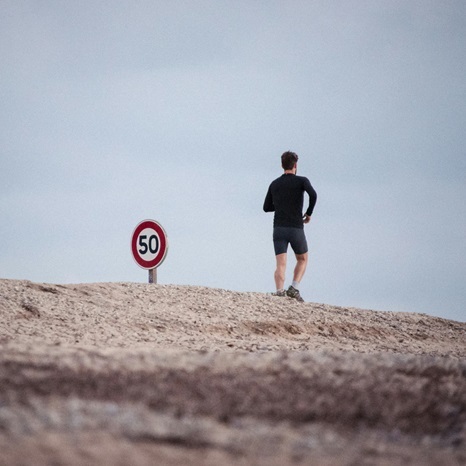

I just had an interesting call with an elite runner, who's a high school cross country runner. He developed a tibial stress fracture, or stress reaction. But he thought it was shin splints. When I looked at it with ultrasound, I saw some stuff that made me really worried about it. So, I got an MRI to confirm. The first question he had was, what's the grade? Grading scales cause confusion. Today on the Doc On The Run Podcast we're talking about why stress fracture grading is BS for runners.


When you get a stress fracture, one of the earliest visible indications on an X-ray or an MRI or a CT scan is a thing called periosteal elevation. Your doctor might see it on ultrasound, x-rays or MRI studies....way before your ever see a crack in the bone. Since it's one of the earliest changes in the bone when you start to get a stress fracture, I thought it might be useful to talk about the term "periosteal elevation" really means. What is periosteal elevation in a stress fracture in a runner? Well, that's what we're talking about today on the Doc On The Run Podcast.


I got an interesting question in the Injured Runners Aid Station, “Should I run without my custom orthotics to strengthen my feet?” It seems logical that stronger runners are less prone to injury. The premise behind this question is whether or not orthotics may cause weakness in your feet or legs. Never ignore your doctor's advice. But you have to ask your doctor the right questions about treatments like custom orthotics. You also have to understand when a little variety might help you become a stronger runner. Why variety makes you stronger as a runner? That's what we're talking about today on the Doc On The Run Podcast.


If you're a runner and you get a stress fracture, the number one most important thing that you do is get it to calm down while you maintain your running fitness. Based on those ideas, I built a framework that I've been using for years with injured runners who want to heal and want to get back to running. In this episode we will go through my stepwise process of how I do it. Today on the Doc On The Run Podcast we're talking about my stress fracture framework simplified.


Pain is the most useful and likely most underutilized tool available to any runner who is tired of waiting for doctors to give them permission to run. How you track your pain is important. One of the critical components in the running injury secrets framework that I discussed in the first episode of the members only podcast in the Injured Runners Aid Station is about pain caused from damage in the tissue versus pain caused by inflammation around the tissue. You cannot run without understanding the difference, at least not safely. Is the pain from injury or just inflammation? Well, that's what we're talking about today on the Doc On The Run Podcast.
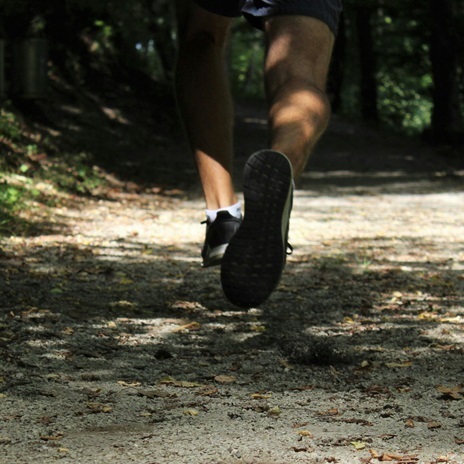

Pain is the most useful and likely most underutilized tool available to any runner who is tired of waiting for doctors to give them permission to run. How you track your pain is important. One of the critical components in the running injury secrets framework that I discussed in the first episode of the members only podcast in the Injured Runners Aid Station is about pain caused from damage in the tissue versus pain caused by inflammation around the tissue. You cannot run without understanding the difference, at least not safely. Is the pain from injury or just inflammation? Well, that's what we're talking about today on the Doc On The Run Podcast.


If you get a plantar plate sprain, it can take a long time to heal, particularly if you're not paying close attention. And because of that, many runners get frustrated. I see 2 responses to that frustration: 1) go to the doctor and hope for some kind of quick fix. 2) just ignore it and run on it because it doesn't really hurt that bad. Both of those are bad ideas with plantar plate injuries in runners. What are two ways capsulitis can actually lead to a plantar plate rupture? Well, that's what we're talking about today on the Doc On The Run Podcast.
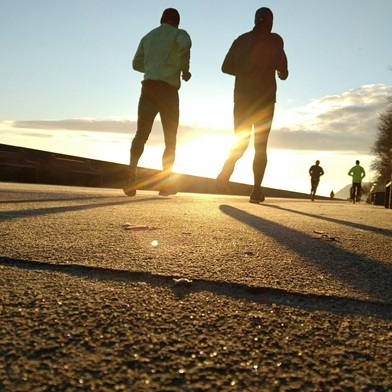

When you get a stress fracture, you need the little bitty crack in the bone to heal. How do you do that? First, you have to stop bending or torquing or twisting the bone in a way that led to the crack in the first place. Second, you have to let the healing process take place. After the inflammation goes away, and after you get some collagen sealing up the healing crack, you start to get "ossification" of the bone where it turns into hard solid bone that you can run on. That happens through a combination of two different types of cells in the bone called osteoblasts and osteoclasts. Osteoblast versus osteoclast, the battle that’s rebuilding bone after a stress fracture. That's what we're talking about today on the Doc On The Run Podcast.


How long does it take you to get fit enough to run a 3 hour marathon? Well, that depends on what? It depends on what you would actually do. Not how long you wait. How long it takes for you to heal your overtraining injury all depends on what you do, and which variables you choose to control. Not how long you wait. Believe it or not, every injured runner who calls me for a consultation has control over far more of these variables than they think. How long will it take my overtraining injury to heal? Well, that's what we're talking about today on the Doc On The Run Podcast.


If you're a runner with a plantar plate sprain, I can understand why you're frustrated. You have some minor vague aching pain in the ball of the foot, and you're trying to get back to running, but you're getting lots of conflicting advice. In my experience, it's very rare that a runner gets a plantar plate injury from what I call "overtraining." Plantar plate ligaments don't get sprained because you ran way too much, or ran too many miles. It doesn't really happen that way. But they do get injured by workouts designed to support your running fitness. What are three running drills that might lead to a plantar plate sprain? Well, that's what we're talking about today on the Doc On The Run Podcast.


If you're trying to improve and you don't improve, whose fault is it? Before we talk about running injuries, let's talk about when you're not injured. You hire a coach. You know the coach is qualified, You know your coach has given you a valid training plan, and you know that you can execute. But then something goes sideways. Your baby gets sick. You get an additional work project. You are sent away out of town on work. Something happens, and you miss some workouts. If you don't communicate that to your coach, and you just skip workouts, or inadvertently stack workouts together to make up for missed workouts, and then you get injured, whose fault is that? Whose fault is it if an injured runner is not getting better? Well, that's what we're talking about today on the Doc On The Run Podcast.


I often get nutrition questions from runners who have overtraining injuries involving tissues made of collagen like the plantar plate ligament. At the heart of these questions is what is the most important ingredient to add in their diet to speed recovery. In this episode we are briefly discussing the key ingredients your body needs to repair collagen. If you are missing these, you might have a slower repair process if you have a partial tear of the plantar plate ligament itself. What is the most important ingredient to a runner after a plantar plate sprain? Well, that's what we're talking about today on the Doc On The Run Podcast.


In the Injured Runners Aid Station, I get questions from injured runners that stop me in my tracks. “I got this injury while running. I had a stress fracture. It was grade two stress fracture. It's been six weeks. How much longer will it be before I can run?” Every injured runner wants to know when it will be safe to run. But, I cannot make that decision based on that information. It seems crazy, but "how long until you can run" is never just about "how long since the injury started." Do not ask me if you don't know your pain numbers. That's what we're talking about today on the Doc On The Run Podcast.
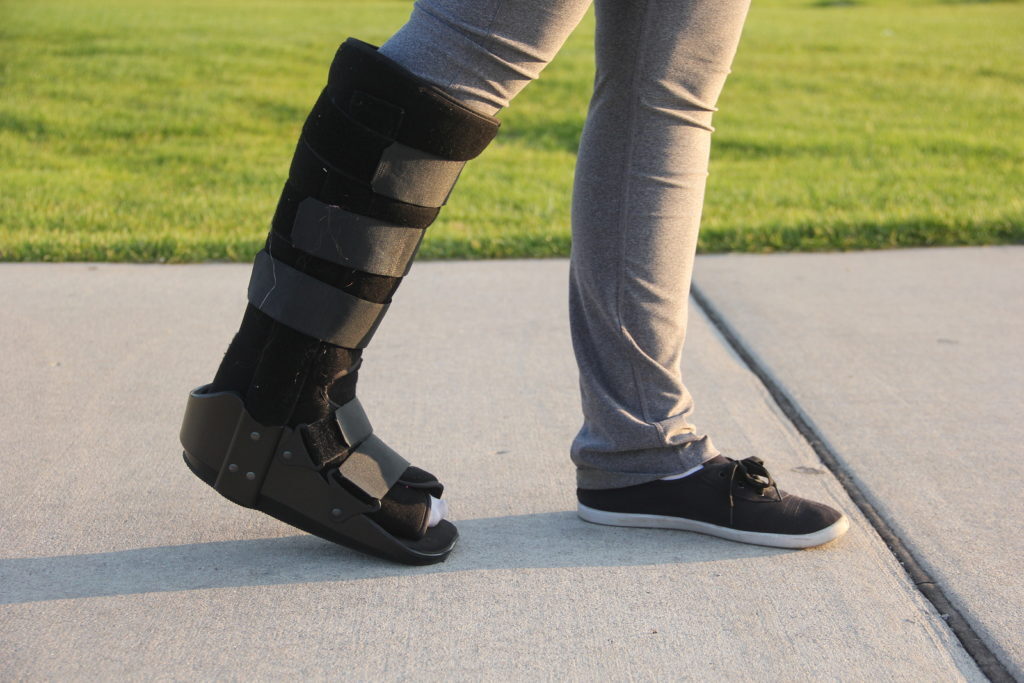

It's no secret that I truly believe fracture walking boots are overprescribed, overused and used for way too long for many injured runners with many different kinds of overtraining injuries. But sometimes I recommend runners use a fracture walking boot for a short period of time. Then teh question becomes which kind? Short boot or Tall boot? A tall fracture walking boot versus a short fracture walking boot. Which one is better if you're an injured runner? Well, that's what we're talking about today on the Doc On The Run Podcast.


I just saw a woman with an extremely painful callus on the bottom of her foot. She got a type of callus doctors call an "intractable plantar keratosis." When you get one of these calluses, it turns into a tiny rock hard callus embedded deep in the skin on the bottom of the foot. It hurts. It's like having a little rock taped to your foot. In theory, you can start running as soon as the callus is removed. But the real question is whether or not running right away will increase the probability of getting the same callus again. Do I have to wait for my callus to go away before I can run? Well, that's a great question and that's what we're talking about today on the Doc On The Run Podcast.
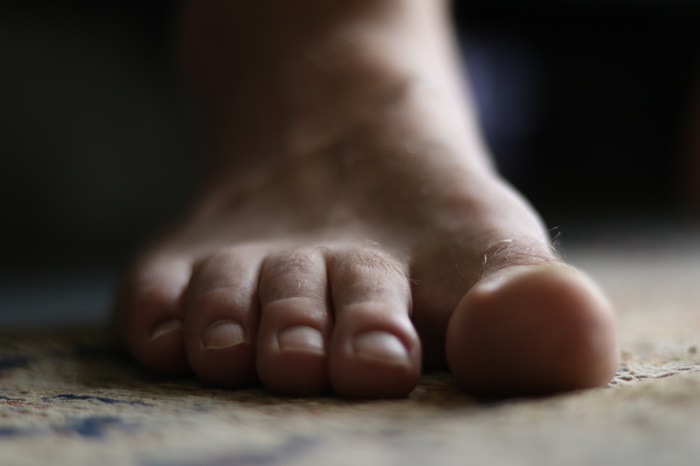

If you get a fracture in your big toe joint it can be easy to get talked into surgery. Especially if you see fragments on an X-ray. Your doctor may call old broken bone pieces by a number of terms: "Osteophytes" "Fracture fragments" "Loose bodies" "Surgical targets" If your doctor points them out and starts talking about surgery, the chances are good that you're going to want to have them removed. But there are times when surgery is totally unnecessary. How can I tell if I really need to have surgery to remove a fracture fragment in my big toe joint? Well, that's what we're talking about today on the Doc On The Run Podcast.


If you get a metatarsal fracture and it does not heal, doctors call it a "non-union." Sometimes, even if you have a non-union you can still run. Maybe without surgery. The single most important consideration with a non-union is stability. The more stable the bone is, the more likely the fracture will heal. The more stable the bone is, the less likely it will cause pain. The more stable the bone is, the sooner you can start running. The more stable the bone is, the less likely you will need surgery. One of the keys to deciding when it's actually healed enough has to do with that stability. When it comes to assessing it, everybody wants an imaging study. What's the best imaging study to assess non-union stability when you have a fracture? Well, that's what we're talking about today on the Doc On The Run Podcast.
